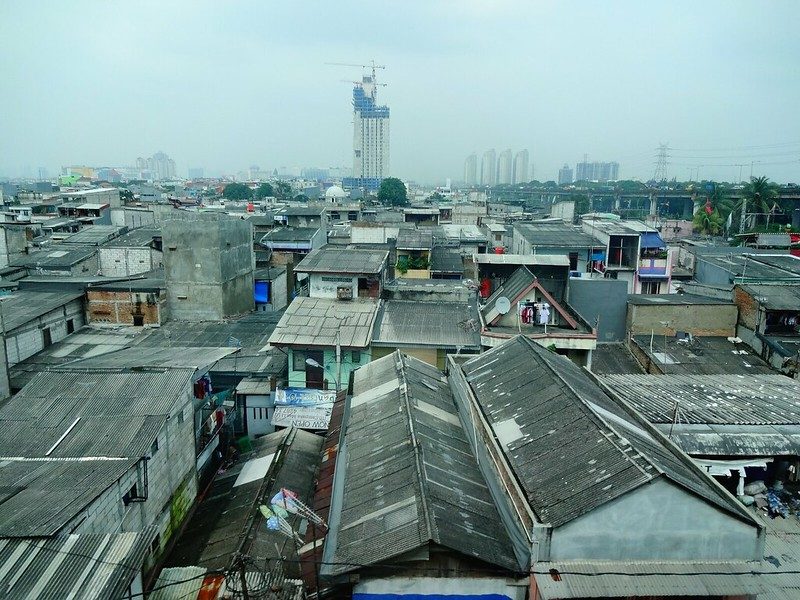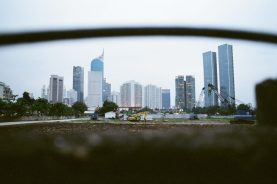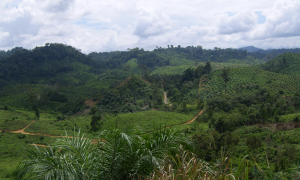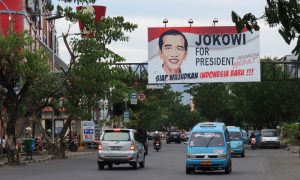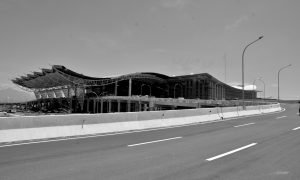Looking around the Asia Pacific region, there exist many possible models for the new Indonesian capital city now audaciously planned for construction in East Kalimantan. If a smart, efficient administrative centre is the goal, then Putrajaya in neighbouring Malaysia, or Sejong in South Korea, are obvious places to look for inspiration. If a green and sustainable urban system is the thing, then Singapore, or Canberra in Australia, are surely worth studying. But in the official and public discussions surrounding last year’s announcement of the plan to relocate the capital, the name of another, more distant foreign city comes up again and again: Brasilia, which replaced Rio de Janeiro as the capital of Brazil in 1960.
In the more than 400 tweets put out by national planning agency Bappenas (@BappenasRI) and the president’s office (@Jokowi) from April to October 2019 on the subject of the new capital, Brasilia was mentioned seven times more often than Canberra or Putrajaya, and 20 times more often than Sejong or Singapore. Since the announcement, Brazil’s ambassador to Indonesia has more than once been asked to talk in the media about his country’s achievement in creating a futuristic new city ‘in the middle of nowhere’ and making it work as the nation’s seat of government.
There are, it is true, some good reasons to see Brasilia as a particularly relevant precedent for the new Indonesian capital: its geographical remoteness, for instance, and its intended role in shifting the country’s political, economic and demographic centre of gravity from its historic core in the direction of an underdeveloped frontier area. Nevertheless the popularity of the Brasilia model in official circles in Indonesia must be regarded as paradoxical, if not downright problematic.
Brasilia, to begin with, is hardly without its problems. Designed partly by an architect with communist sympathies, Oscar Niemeyer, it was intended to provide comfortable accommodation, with modern amenities, for all groups and classes in society. As time went by, however, the planned city became a preserve of the rich, while the poor who waited on them were forced out of the elegant, sterile city centre into crowded new suburbs. It is here in these unplanned satellite towns, often without adequate infrastructure, services, or civic spaces, that the great majority of Brasilia’s inhabitants now live. In its inequality and segregation, Brasilia has in fact increasingly become an accurate microcosm of Brazil as a whole. And Brazil’s inequality is not a good model for Indonesia to emulate.
In terms of average income per citizen, Brazil is admittedly more than twice as rich as Indonesia. In certain industries, notably aviation, it boasts world-class technological capacity. But Brazil is also a profoundly dualistic country. Its wealth is so unevenly distributed that the proportion of the population living in severe poverty (on incomes of less than US$2 dollars per day) is still barely lower than in Indonesia. Large mechanised farms, owned by a wealthy few, dominate the Brazilian countryside, while the rural poor have been crammed into urban slums, often in the shadow of luxury apartment blocks. Brazil’s murder rate, no doubt partly because of its extreme inequality, is estimated to be more than sixty times higher than Indonesia’s. Overall, Brazil is also less industrialized than Indonesia, and exports less in relation to the size of its economy. It is far more indebted than Indonesia, and in recent decades has had much less impressive growth rates. Its politics, although democratic since 1985, are corrupt and unstable, with power recently lurching from a left-wing Workers’ Party to a government of far-right populists.
Brasilia, of course, is not in itself the cause of the many things that ail Brazil as a country. But as a national project, it does unfortunately epitomise some of the misplaced ideals and misguided policies that have shaped Brazil as a whole. With its avant-garde architecture and ground plan evoking the dynamic shape of an aircraft, Brasilia was built above all as a symbol of modernity. However it was never a practical way of actually modernising Brazil, or of improving the lives of Brazilians beyond the privileged few who lived there.
Despite brave talk of the new city spearheading an egalitarian transformation of the whole society, little thought was given to how exactly Brasilia would drive that transformation. For countless financial, practical, and political reasons, no other city in the country was able to imitate Brasilia’s experiment in social engineering. At the same time, the burden imposed by the project on the national budget made it even more difficult for existing cities, and for rural areas, to address their existing problems.
Brasilia has been described as a negation of actually existing conditions in Brazil. Its character is not developmental, but counterfactual: a vain antithesis to the rest of the country, created in splendid isolation, but destined little by little to be invaded and recolonised by the flawed reality of the nation. The high modernist escapism that gave birth to Brasilia—preoccupied with the future rather than the present and with technical progress rather than shared growth—can partly explain why the fundamental problems which plague Brazil have never really been resolved: poverty, inequality, and insecurity. Those problems do not call for grand historic gestures like Brasilia (where few Brazilians ever go) or for technological achievements like Brazil’s state-linked aircraft and petroleum industries (in which few Brazilians can hope to be employed). They call for scale and outreach in planning, and for urgency and pragmatism in execution.
Like Brasilia, Indonesia’s yet-to-be-named new capital is above all a symbol of modernity. The arbitrary, interchangeable way in which English-language buzzwords like ‘sustainable’, ‘smart’, ‘green’, ‘beautiful’, and ‘innovative’ appear in the rhetoric surrounding the new capital confirms that these terms are mostly just signs pointing to the real function of the project as a ‘representation of the progress of the nation’ (representasi kemajuan bangsa), as Jokowi himself puts it.
This is not to say that the new capital will necessarily fail in setting—within its boundaries—higher standards of sustainability, greenness, perhaps even inclusivity, than any existing Indonesian city. But exactly how those high standards will benefit the other cities, or the nation as a whole, is a very different question.
It is striking that the rhetoric of national transformation which dignified the Brasilia project, however unrealistically, seems to be largely absent in relation to its Indonesian counterpart. Official materials promoting the new city in Kalimantan, whether policy-oriented or intended for a for a mass audience, seldom suggest that its purpose is to set an example for other cities or regions to follow, let alone how exactly they will be enabled to do so. Among more than 400 tweets on the subject of the new capital issued by Bappenas and the president over a period of seven months last year, only two mentioned such an exemplary or catalyst function.
Even more than Brasilia, then, this new capital appears to be conceived almost as a pure symbol, floating in deliberate isolation from reality. Far from transforming the nation, it will not significantly relieve the immediate problems of even the current capital, Jakarta, any more than the creation of Brasilia fixed the problems of Rio de Janeiro. With barely a million Jakartans likely to move to the new location even in an optimistic scenario, another 30 million will inevitably be left behind in the sinking, flooding, polluted, gridlocked metropolis that is Greater Jakarta, the second biggest city on earth.
Out of sight, out of mind? Political accountability and Indonesia’s new capital plan
What happens when civil society, the media, and policymakers are based in different cities?
For more than two decades after 1965, the New Order, despite its corruption and its authoritarianism, promoted inclusive growth by ploughing unprecedented amounts of public money into the support of smallholder agriculture. This helped ensure that rural Indonesia, unlike rural Brazil, did not become the depopulated domain of mechanised agribusiness. In the cities, meanwhile, the New Order sought to develop and improve existing kampung neighbourhoods, rather than bulldozing them as unwanted ‘slums’ or abandoning them to poverty and crime, which was the fate of Brazil’s favelas. Indonesia today may not be the world’s richest or most equitable country, but it would have been a lot worse on both counts without these benevolent policy decisions of the New Order period.
It is then significant that one of the earliest and sharpest critics of the new capital city plan was former New Order technocrat and economics professor Emil Salim, Indonesia’s most distinguished living planner. ‘If Jakarta is broken, then fix it’, advised Salim curtly as soon as the decision to move the capital was announced in August 2019. ‘If the government makes 466 trillion rupiah available to finance the move to Kalimantan, then the funds available for solving Jakarta’s problems must be reduced by the same amount’. As a former environment minister and winner of multiple international awards for environmental protection, Salim’s rejection of any ecological rationale for the plan was particularly telling. ‘167 million people in Java are facing flood disasters because the northern part of the island is sinking,’ he observed. ‘But instead of accepting its responsibilities, Bappenas comes with this relocation plan […] I am not Javanese but it makes me cry to read this’.
In many ways, democratic Indonesia since reformasi (1998) has itself been animated by an inclusive spirit. The introduction in 2014 of a universal health insurance scheme for all citizens is a historic milestone in that respect. But there have also been countervailing trends. Examples include the rise of a new economic nationalism in ideology and policy that has often looked to be more about the interests of Indonesian big business than about those of the Indonesian population at large. The programmes of urban beautification which helped bring Jokowi to power, as mayor of Surakarta and then governor of Jakarta, reflected the modernising aspirations of the urban middle classes, not the interests of the informal sector traders who were displaced in order to clean up the streets. The new capital fits squarely into this category of recent policy impulses that are essentially elitist rather than inclusive, and symbolic rather than practical—to say nothing of the oligarchic financial interests which, as documented last year in an eye-opening study by civil society organisations, underlie the specific choice of location for the new city.
For Brazil, the period since Brasilia became its capital has been one of relative economic decline. Brazilians today may be twice as rich as Indonesians on average, but in 1960, when Brasilia was inaugurated, they were five times richer. In 1960, Brazil had three quarters of the per capita income of its former colonial power, Portugal; today it has less than half. Brasilia, to repeat, was not in itself responsible for this decline. But the elitist, impractical, Utopian policy impulses which Brasilia epitomised probably did play a role in Brazil’s descent from relative prosperity to the status of developmental problem child. And as far as Brasilia itself is concerned, there is broad consensus that the city has failed to live up to the expectations of its makers. It should therefore be a matter of concern that Brazil’s experience with Brasilia is still being presented in Indonesia as a positive lesson from history. Rightly understood, it is a warning from history.
 Facebook
Facebook  Twitter
Twitter  Soundcloud
Soundcloud  Youtube
Youtube  Rss
Rss 